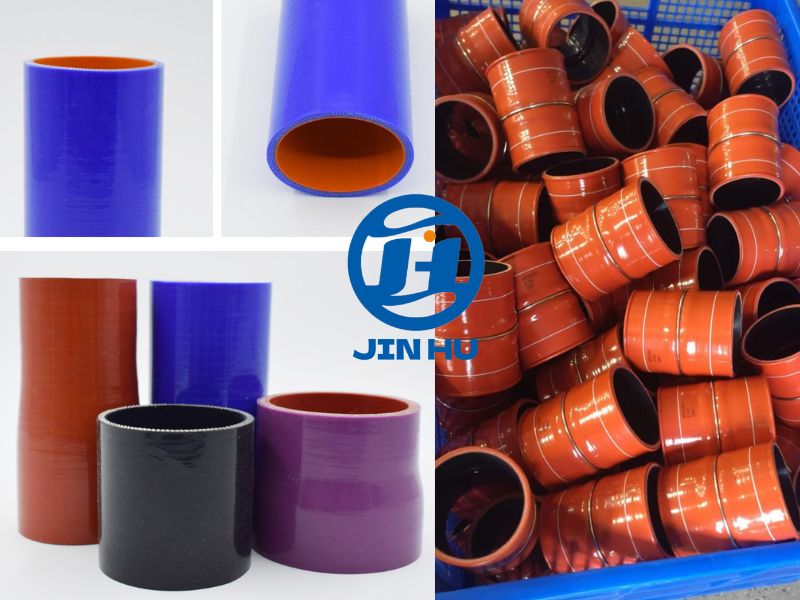What Are You Looking For?

The automotive industry is witnessing a growing trend towards the adoption of silicone coupling hoses, a shift that promises to enhance vehicle performance, improve reliability, and reduce maintenance costs. As manufacturers continue to push the limits of engine power, efficiency, and sustainability, silicone hoses are emerging as a key component in both performance and everyday vehicles.
Silicone coupling hoses, made from high-quality silicone rubber, are gaining popularity due to their impressive performance in high-temperature, high-pressure environments typically found in modern vehicles. These flexible hoses, often reinforced with materials like polyester or stainless steel, are primarily used in critical vehicle systems such as air intake, turbocharging, cooling, and exhaust.
Automotive manufacturers are increasingly turning to silicone hoses because of their exceptional ability to withstand the extreme conditions inside the engine bay. Unlike traditional rubber hoses, which can degrade over time due to heat, ozone, and chemical exposure, silicone maintains its integrity and flexibility, ensuring long-lasting performance and improved vehicle reliability.
In high-performance vehicles, silicone coupling hoses are a crucial component of air intake and turbocharger systems. These hoses connect various components, such as the air filter, intake manifold, and turbocharger, helping to ensure smooth and uninterrupted airflow to the engine. Silicone hoses play an essential role in preventing air leaks that could lead to engine inefficiency or reduced performance.
Turbochargers, which increase engine power by compressing the intake air, place significant stress on the hoses that connect to them. Silicone coupling hoses, due to their heat resistance and ability to handle high pressures, are ideal for these applications, preventing failure in even the most demanding environments.
Silicone hoses are also widely used in automotive cooling systems. These hoses connect vital components like radiators, water pumps, and thermostats, ensuring that coolant is efficiently circulated throughout the engine to prevent overheating. Silicone’s ability to resist degradation from engine coolant, oils, and extreme heat makes it a better alternative to traditional rubber hoses, especially in the high-temperature areas of the engine.
In exhaust systems, silicone coupling hoses help to connect parts like exhaust manifolds to the turbocharger or exhaust pipe, maintaining a secure and heat-resistant seal. This not only prevents leaks but also ensures that exhaust gases flow efficiently out of the engine, contributing to both performance and emissions control.
One of the most attractive benefits of silicone coupling hoses is their extended service life. Due to their resistance to heat, UV radiation, ozone, and chemicals, silicone hoses often last much longer than traditional rubber alternatives. This durability translates to fewer replacements and less frequent maintenance, resulting in cost savings for both manufacturers and vehicle owners.
As the automotive industry continues to push for greener and more sustainable solutions, silicone hoses offer another key benefit: sustainability. Silicone is a non-toxic, environmentally friendly material that is highly resistant to aging and wear, meaning that silicone hoses have a longer lifecycle and less environmental impact compared to their rubber counterparts. This makes them an attractive option for manufacturers looking to meet stricter environmental standards and improve the overall sustainability of their vehicles.
Furthermore, silicone hoses are 100% recyclable, further enhancing their environmental appeal. The growing demand for eco-friendly materials in the automotive industry is likely to continue driving the use of silicone coupling hoses in the coming years.
As the demand for high-performance, durable, and sustainable automotive components increases, silicone coupling hoses are poised to become even more prevalent. Innovations in automotive engineering—especially in the development of electric and hybrid vehicles—are expected to increase the need for high-quality, high-performance components like silicone hoses.
The future of silicone hoses in automotive applications looks extremely promising. As electric and hybrid vehicles become more common, the need for components that can withstand high temperatures and extreme conditions will only increase. Silicone hoses, with their unparalleled flexibility, durability, and resistance to harsh environments, will be a crucial part of automotive innovation.
Silicone coupling hoses are transforming the automotive industry by offering enhanced performance, durability, and cost savings. Whether in turbocharged engines, cooling systems, or exhaust setups, these hoses are playing an integral role in improving vehicle efficiency, safety, and reliability. With their long lifespan, resistance to harsh conditions, and eco-friendly nature, silicone hoses are likely to remain a staple in automotive manufacturing for years to come.
As the automotive sector continues to innovate and embrace new technologies, silicone coupling hoses will be at the forefront of creating the next generation of vehicles—more powerful, more efficient, and more sustainable than ever before.